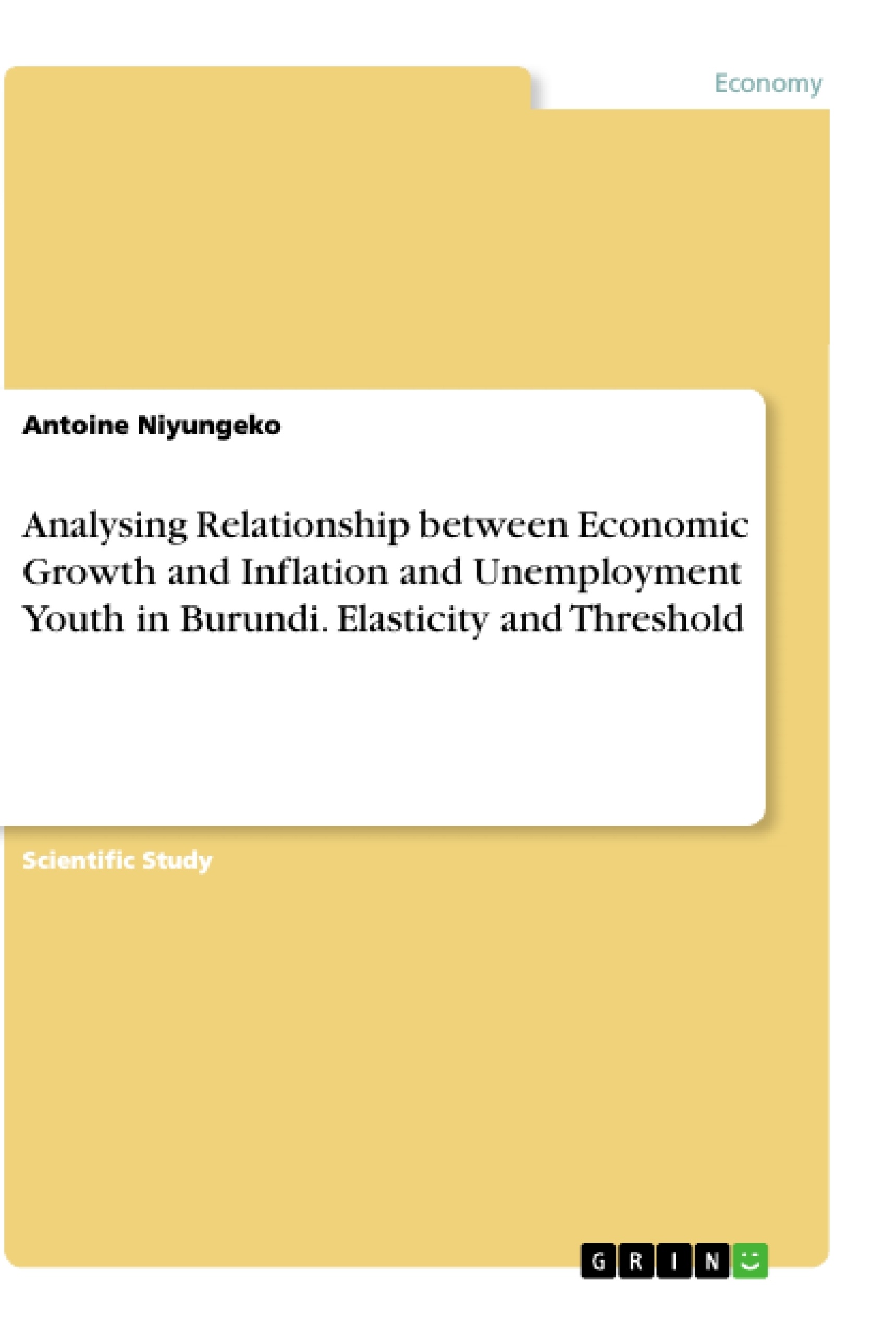The purpose of this study is to analyze the relationship between gross domestic product growth (GDPG) and inflation (INF), unemployment youth male (UNYM), and unemployment youth female (UNYF), to analyze the nature of elasticity, and to evaluate the threshold where GDPG changes. Time-series data covering 1970 -2018 were used to examine the impact of INF and UNYM, and UNYF on GDPG. To estimate the relationship between GDPG and INF and UNYM, and UNYF, regression analysis was performed. Rainbow test was used to test the linearity of the model, Breusch-Pagan test was used to test homoscedasticity, Box Ljung Test was used to test autocorrelation, Phillips-Perron Unit Root Test was used to test whether time series were stationary. Elasticity was applied to measure the degree of responsiveness of change in GDPG to changes in INF and UNYM, and UNYF levels. Data analysis was performed using R and JASP. Results revealed a statistically significant negative relationship between GDPG and INF, UNYM and UNYF. Moreover, the result showed that GDPG responded strongly towards change in inflation and unemployment youth. A threshold was found beyond which GDPG became negative while under the threshold, GDPG continued to grow. To increase economic growth, Burundi should reduce inflation and unemployment youth under the threshold. Burundi should also focus on reducing female unemployment rate as it has great impact on economic growth. Burundi should stimulate entrepreneurship as it contributes in new job creation.
Inhaltsverzeichnis (Table of Contents)
- Abstract
- Introduction
- Literature Review
- Problem Statement
- Methodology
- Results and Discussions
- Conclusion
- Recommendations
- References
Zielsetzung und Themenschwerpunkte (Objectives and Key Themes)
This study aims to analyze the relationship between economic growth, inflation, and youth unemployment in Burundi. It examines the elasticity of this relationship and determines the threshold level at which economic growth becomes negative. The research uses time-series data from 1970 to 2018 to evaluate the impact of inflation and unemployment on economic growth in Burundi.
- The relationship between economic growth and inflation, youth unemployment (male and female)
- The elasticity of the relationship between economic growth and inflation and unemployment
- The threshold level at which economic growth becomes negative due to changes in inflation and unemployment
- The impact of female unemployment on economic growth
- The role of entrepreneurship in job creation and economic growth
Zusammenfassung der Kapitel (Chapter Summaries)
- Abstract: This chapter introduces the study's objective, methodology, and key findings, highlighting the relationship between economic growth, inflation, and youth unemployment in Burundi.
- Introduction: The chapter presents the socio-political context of Burundi, specifically the impact of the 2015 crisis on economic sectors and key macroeconomic indicators. It then discusses the different viewpoints on the relationship between inflation and economic growth, citing various studies and perspectives.
- Literature Review: The chapter explores existing research on the relationship between economic growth, inflation, and unemployment. It provides a comprehensive overview of different studies conducted in diverse contexts, including analyses of Sub-Saharan Africa, the Eurozone, and Western Balkan countries.
- Problem Statement: This chapter defines the research problem by focusing on the poverty and unemployment challenges faced by Burundi. It highlights the need to address these issues through economic growth strategies, especially in light of the country's high population growth rate.
- Methodology: This section explains the research methodology used, including the data collection, data analysis techniques, and statistical tests employed to analyze the relationships between economic growth, inflation, and unemployment.
Schlüsselwörter (Keywords)
The main keywords and focus topics of this study include: Burundi, unemployment, threshold, economic growth, inflation, elasticity, time-series analysis, regression analysis, macroeconomics, and entrepreneurship.
- Arbeit zitieren
- Master Antoine Niyungeko (Autor:in), 2020, Analysing Relationship between Economic Growth and Inflation and Unemployment Youth in Burundi. Elasticity and Threshold, München, GRIN Verlag, https://www.grin.com/document/951170



